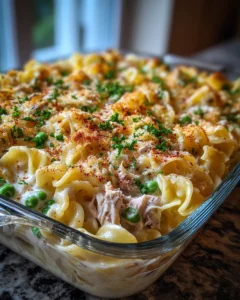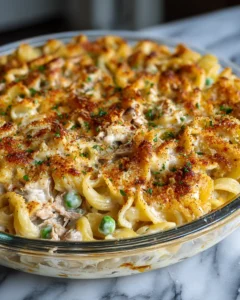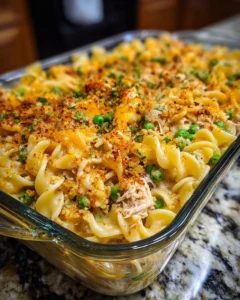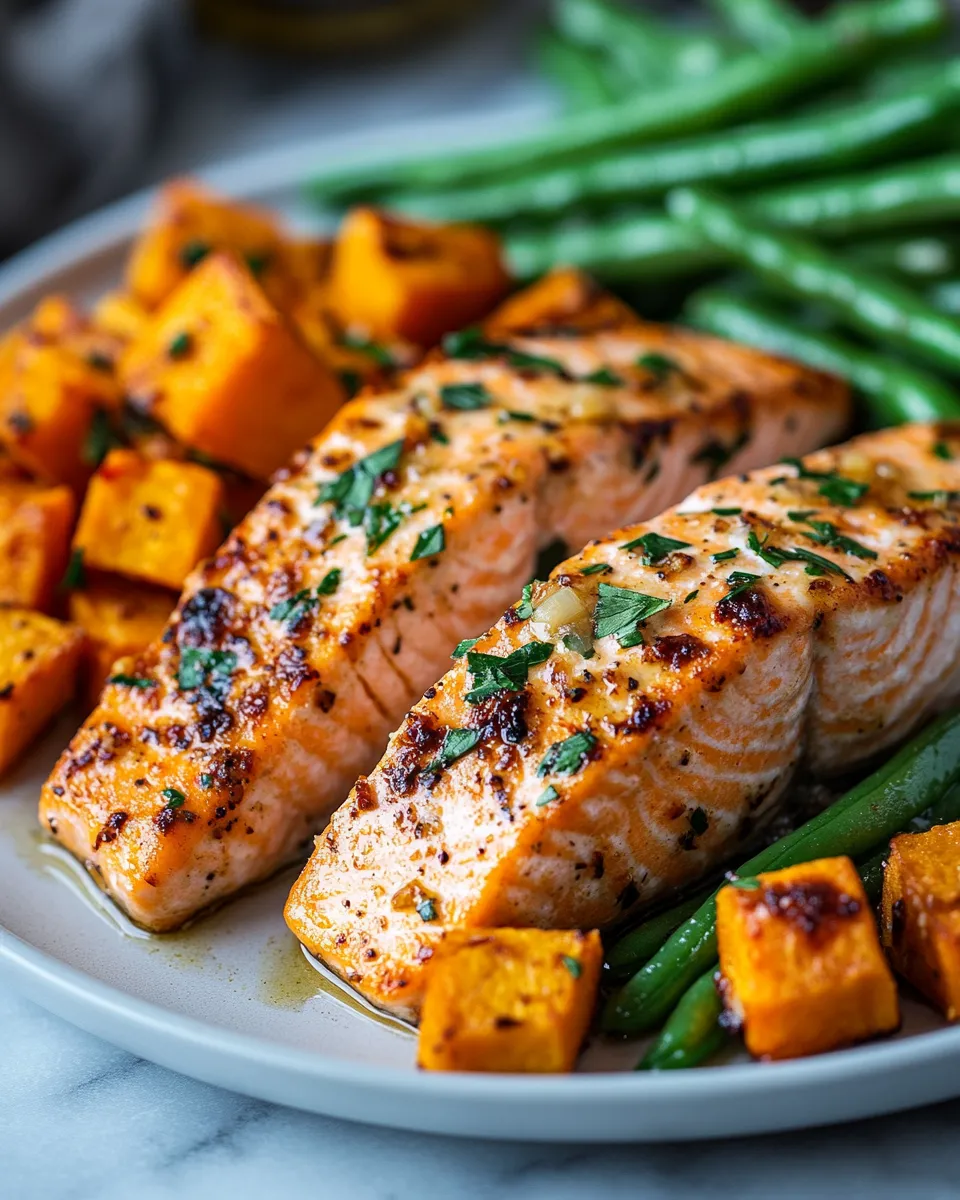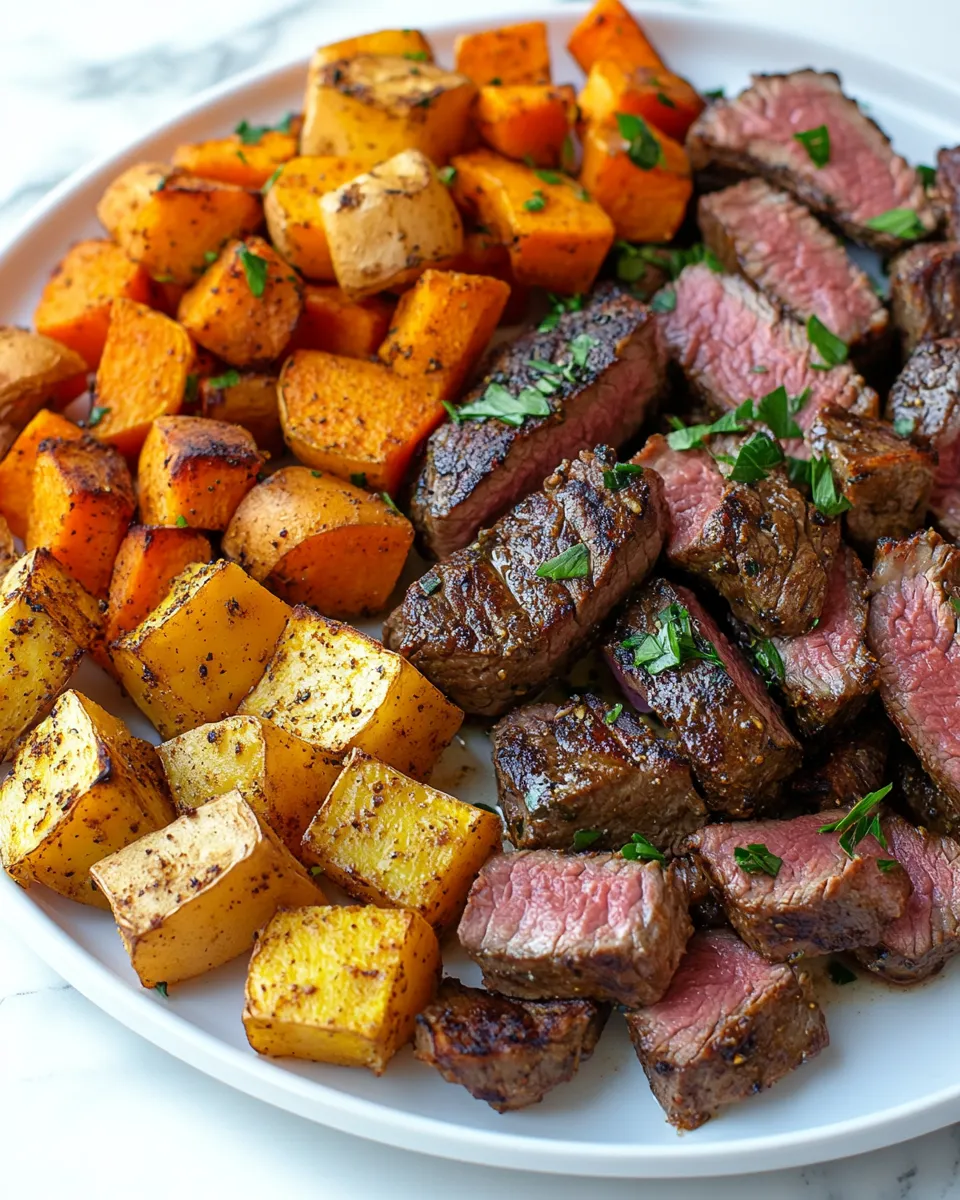There’s something undeniably comforting about a warm, cheesy casserole straight from the oven. Tuna noodle casserole has been a staple in kitchens across America for decades, evoking memories of cozy family dinners, potlucks, and Sunday suppers. This dish blends tender noodles, creamy sauce, flaky tuna, and a crunchy topping into a symphony of flavors and textures that feels like home in every bite.
Originally popularized in the mid-20th century, tuna noodle casserole became a pantry-friendly solution for busy households, combining shelf-stable ingredients with fresh vegetables to create a satisfying meal. Today, it remains a beloved comfort food, perfect for weeknight dinners, family gatherings, or even meal prep for the week ahead. This recipe elevates the classic dish with creamy homemade sauce, fresh herbs, and a golden, crunchy topping that will make you forget every other casserole you’ve tried.
Ingredients You’ll Need
Before you start cooking, gather these fresh and pantry-friendly ingredients for the ultimate flavor combination:
For the Casserole:
-
12 oz egg noodles
-
2 cans of tuna in water, drained
-
1 cup frozen peas
-
1 cup diced carrots
-
1 small onion, finely chopped
-
3 cloves garlic, minced
-
2 tablespoons butter
-
2 tablespoons all-purpose flour
-
2 cups milk (whole or 2% preferred)
-
1/2 cup sour cream
-
1 teaspoon Dijon mustard
-
Salt and pepper to taste
-
1/2 teaspoon paprika
-
1/2 teaspoon dried thyme
For the Topping:
-
1 cup shredded cheddar cheese
-
1/2 cup panko breadcrumbs
-
2 tablespoons melted butter
-
1 teaspoon garlic powder
Pro Tip: Feel free to swap in your favorite vegetables like broccoli, bell peppers, or mushrooms to customize the casserole to your taste.
Step-by-Step Instructions
Follow these steps carefully to ensure your tuna noodle casserole turns out creamy, flavorful, and perfectly baked. Each step is designed to build layers of flavor and texture, giving you a dish that’s comforting, satisfying, and unforgettable.
Step 1: Cook the Noodles
Start by bringing a large pot of salted water to a rolling boil. Adding salt helps season the noodles from the inside, enhancing the overall flavor of the casserole. Cook 12 ounces of egg noodles according to the package instructions, making sure they are al dente—tender but still slightly firm to the bite. Overcooked noodles can become mushy once baked in the creamy sauce, so keep a close eye. Once done, drain the noodles thoroughly and return them to the pot. Toss them lightly with a small amount of butter or olive oil to prevent sticking while you prepare the sauce. Setting aside perfectly cooked noodles ensures that your casserole will have the ideal texture throughout.
Step 2: Sauté the Aromatics
In a large skillet over medium heat, melt 2 tablespoons of butter. Once melted, add finely chopped onion, minced garlic, and diced carrots. Sauté the mixture for 5–7 minutes until the vegetables are softened and fragrant. This step is crucial, as it creates a flavorful base for the creamy sauce, giving the casserole depth and richness. The aroma of garlic and onion cooking in butter is a classic comfort food cue and will set the tone for the entire dish. Be sure to stir occasionally to prevent the garlic from burning and turning bitter.
Step 3: Make the Creamy Sauce
Sprinkle 2 tablespoons of all-purpose flour over the sautéed vegetables. Cook for 1-2 minutes, stirring constantly, to form a roux, which will thicken the sauce. Slowly whisk in 2 cups of milk, ensuring no lumps form. Allow the mixture to simmer gently until it thickens slightly. Stir in 1/2 cup sour cream and 1 teaspoon Dijon mustard to enhance creaminess and flavor. Season with salt, pepper, paprika, and dried thyme. Cook for an additional 2–3 minutes to let the flavors meld, then remove from heat. This sauce is the heart of your casserole, providing richness and a velvety texture that binds the noodles and tuna together.
Step 4: Combine Tuna and Vegetables
Gently fold the drained tuna and 1 cup frozen peas into the creamy sauce. Take care not to overmix, as overhandling can break down the tuna into small flakes, losing its delicate texture. Taste the mixture and adjust seasoning if necessary. This step ensures that every bite is balanced with creamy sauce, tender tuna, and sweet, soft vegetables.
Step 5: Assemble the Casserole
Preheat your oven to 375°F (190°C). In a large mixing bowl, combine the cooked noodles with the tuna-vegetable sauce, folding gently to coat the noodles evenly. Transfer the mixture into a greased 9×13-inch baking dish, spreading it into an even layer. Properly assembling the casserole ensures consistent cooking and even distribution of flavors throughout.
Step 6: Prepare the Topping
In a small bowl, combine 1 cup shredded cheddar cheese, 1/2 cup panko breadcrumbs, 2 tablespoons melted butter, and 1 teaspoon garlic powder. Mix until well combined, then sprinkle evenly over the top of the casserole. This topping will create a golden, crunchy layer that contrasts perfectly with the creamy interior, adding texture and visual appeal.
Step 7: Bake Until Golden
Bake the casserole uncovered for 25–30 minutes, or until the top is golden brown and the edges are bubbling. The bubbling indicates that the casserole is heated through and the flavors have melded together. Let it rest for 5 minutes before serving. This resting period allows the sauce to thicken slightly and makes slicing or scooping easier, ensuring every portion is creamy, cheesy, and satisfying.
By following these steps, your tuna noodle casserole will be a comforting, hearty dish that delights family and friends alike.
Tips for the Perfect Tuna Noodle Casserole
-
Use high-quality tuna: Opt for solid white tuna for the best texture and flavor. Avoid overly processed tuna, which can make the casserole mushy.
-
Don’t overcook the noodles: Slightly undercook the noodles before baking, as they will continue to cook in the oven and absorb flavors from the sauce.
-
Add vegetables for extra nutrition: Carrots, peas, and bell peppers are classic additions, but spinach or zucchini can add a fresh twist.
-
Make ahead: Assemble the casserole a day in advance and refrigerate. Bake when ready to serve for a quick weeknight dinner.
-
Customize the topping: Mix in Parmesan cheese or crushed potato chips for added crunch and flavor.
Variations to Try
-
Mediterranean Style: Add sun-dried tomatoes, olives, and feta cheese for a tangy Mediterranean twist.
-
Gluten-Free Version: Use gluten-free pasta and substitute flour with cornstarch for the sauce.
-
Low-Carb Option: Swap noodles for zucchini noodles or cauliflower rice to make a lighter, low-carb casserole.
Pairing and Serving Suggestions
Tuna noodle casserole is a complete meal on its own, but these additions can enhance the dining experience:
-
Fresh Green Salad: A crisp side salad with vinaigrette balances the richness of the casserole.
-
Garlic Bread or Dinner Rolls: Perfect for soaking up extra sauce and adding a crunchy element.
-
Pickles or Relish: Tangy pickles cut through the creamy texture and add a refreshing bite.
Serving Tip: Serve straight from the oven for the ultimate comfort food experience. Leftovers reheat beautifully in the microwave or oven.
Why This Recipe Stands Out
While tuna noodle casserole is a classic, this version stands out because of:
-
Fresh Ingredients: Homemade sauce, fresh vegetables, and quality tuna elevate the traditional dish.
-
Perfectly Balanced Flavor: Savory, cheesy, and slightly tangy with a hint of spice from paprika and mustard.
-
Versatile: Works as a weeknight dinner, potluck contribution, or meal prep solution.
-
Customizable: Easily adaptable to dietary preferences and seasonal ingredients.
Every bite is a nostalgic, cozy reminder of home-cooked comfort food—but elevated with a fresh, modern twist.
Storing and Reheating
-
Refrigerator: Store leftovers in an airtight container for up to 3 days.
-
Freezer: Freeze uncooked casseroles for up to 3 months. Thaw overnight in the fridge before baking.
-
Reheating: Bake at 350°F (175°C) for 15–20 minutes or microwave in individual portions until heated through. Adding a splash of milk can help maintain creaminess when reheating.
Frequently Asked Questions
1. Can I use canned cream of mushroom soup instead of making a homemade sauce?
Yes, using canned cream of mushroom soup is a convenient shortcut that can save time, especially on busy weeknights. Simply substitute it for the homemade roux-based sauce, and your casserole will still be tasty. However, making the sauce from scratch adds a fresh, rich, and creamy flavor that elevates the dish to the next level. Homemade sauce allows you to control the seasoning and texture, ensuring the noodles are coated perfectly without being overly thick or salty. If you prefer a lighter version, you can even substitute part of the milk with low-fat options while still achieving a creamy consistency.
2. Can I freeze this casserole?
Absolutely! Tuna noodle casserole freezes exceptionally well, making it ideal for meal prep or planning ahead for family gatherings. To freeze, assemble the casserole without adding the breadcrumb and cheese topping. Cover tightly with aluminum foil or an airtight lid to prevent freezer burn. The casserole can be frozen for up to three months. When ready to bake, thaw it overnight in the refrigerator, then add the topping and bake as directed. You can also bake directly from frozen—just extend the cooking time by 10–15 minutes and cover loosely with foil to prevent the topping from browning too quickly. This makes it easy to enjoy a comforting meal with minimal prep.
3. How do I make it extra creamy?
For an ultra-creamy casserole, you can add a few simple ingredients while making the sauce. A splash of heavy cream or half-and-half can make the sauce richer, while an extra tablespoon of sour cream adds tang and smoothness. Some people even like to fold in a little cream cheese for a velvety texture. Be careful not to add too much liquid, though, as it may make the casserole too runny. Achieving the right balance ensures every bite is indulgent without compromising the structure of the casserole.
4. Can I use fresh tuna instead of canned?
Yes, fresh tuna can be used, but it requires a slightly different approach. Cook the fresh tuna separately—grilled, seared, or poached—and then flake it into bite-sized pieces before folding it into the casserole. Fresh tuna has a firmer texture and stronger flavor than canned, so careful cooking is necessary to prevent it from becoming dry or overpowering the dish. Using fresh tuna gives the casserole a more sophisticated flavor profile, ideal for when you want a homemade version with elevated taste.
5. Can I customize the vegetables in this casserole?
Definitely! Classic additions include peas, carrots, and onions, but you can add broccoli, bell peppers, zucchini, or even corn to suit your taste. This allows you to incorporate seasonal vegetables or use what you have on hand while keeping the casserole nutritious and flavorful.


